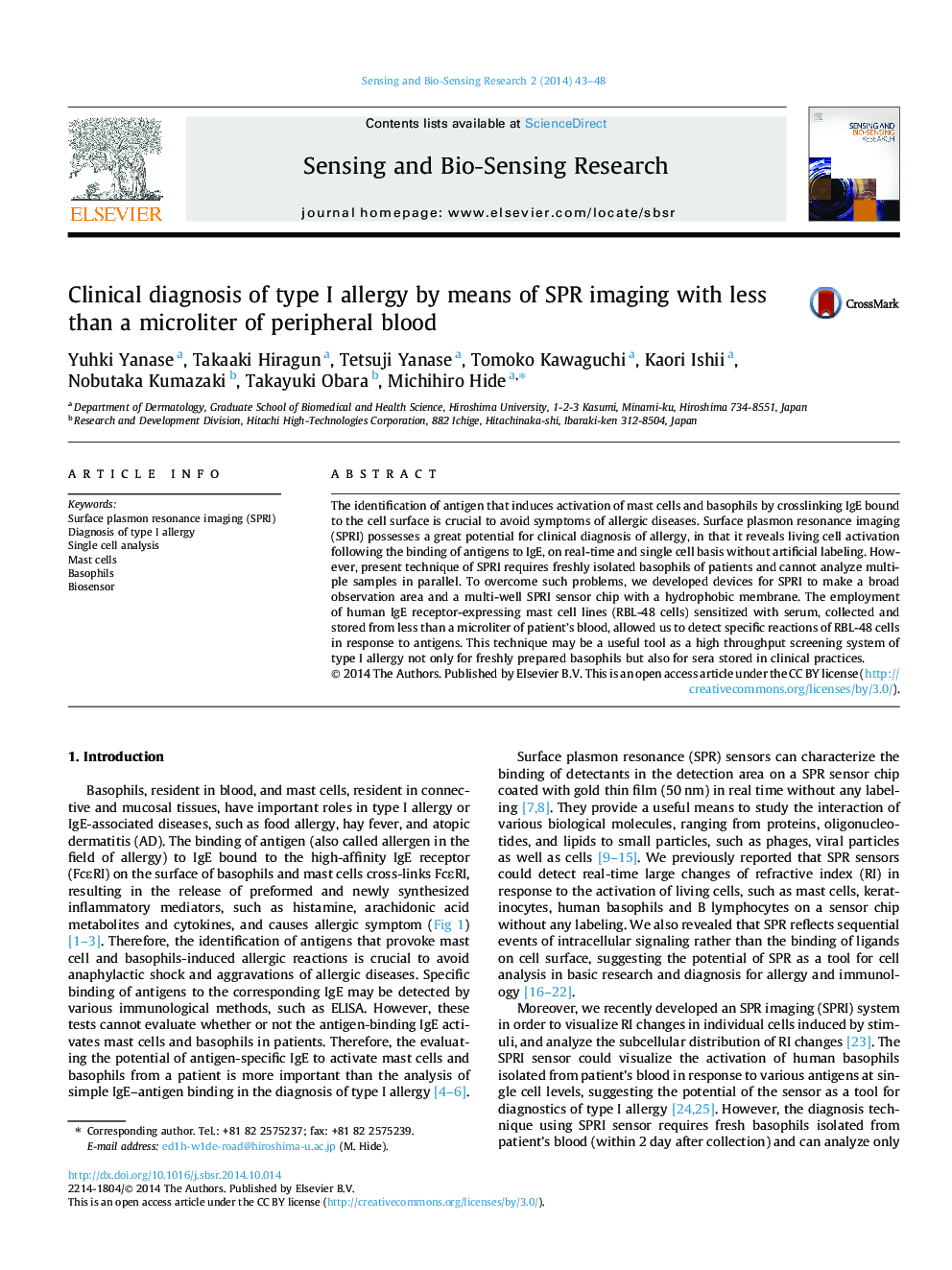| Article ID | Journal | Published Year | Pages | File Type |
|---|---|---|---|---|
| 806796 | Sensing and Bio-Sensing Research | 2014 | 6 Pages |
The identification of antigen that induces activation of mast cells and basophils by crosslinking IgE bound to the cell surface is crucial to avoid symptoms of allergic diseases. Surface plasmon resonance imaging (SPRI) possesses a great potential for clinical diagnosis of allergy, in that it reveals living cell activation following the binding of antigens to IgE, on real-time and single cell basis without artificial labeling. However, present technique of SPRI requires freshly isolated basophils of patients and cannot analyze multiple samples in parallel. To overcome such problems, we developed devices for SPRI to make a broad observation area and a multi-well SPRI sensor chip with a hydrophobic membrane. The employment of human IgE receptor-expressing mast cell lines (RBL-48 cells) sensitized with serum, collected and stored from less than a microliter of patient’s blood, allowed us to detect specific reactions of RBL-48 cells in response to antigens. This technique may be a useful tool as a high throughput screening system of type I allergy not only for freshly prepared basophils but also for sera stored in clinical practices.
